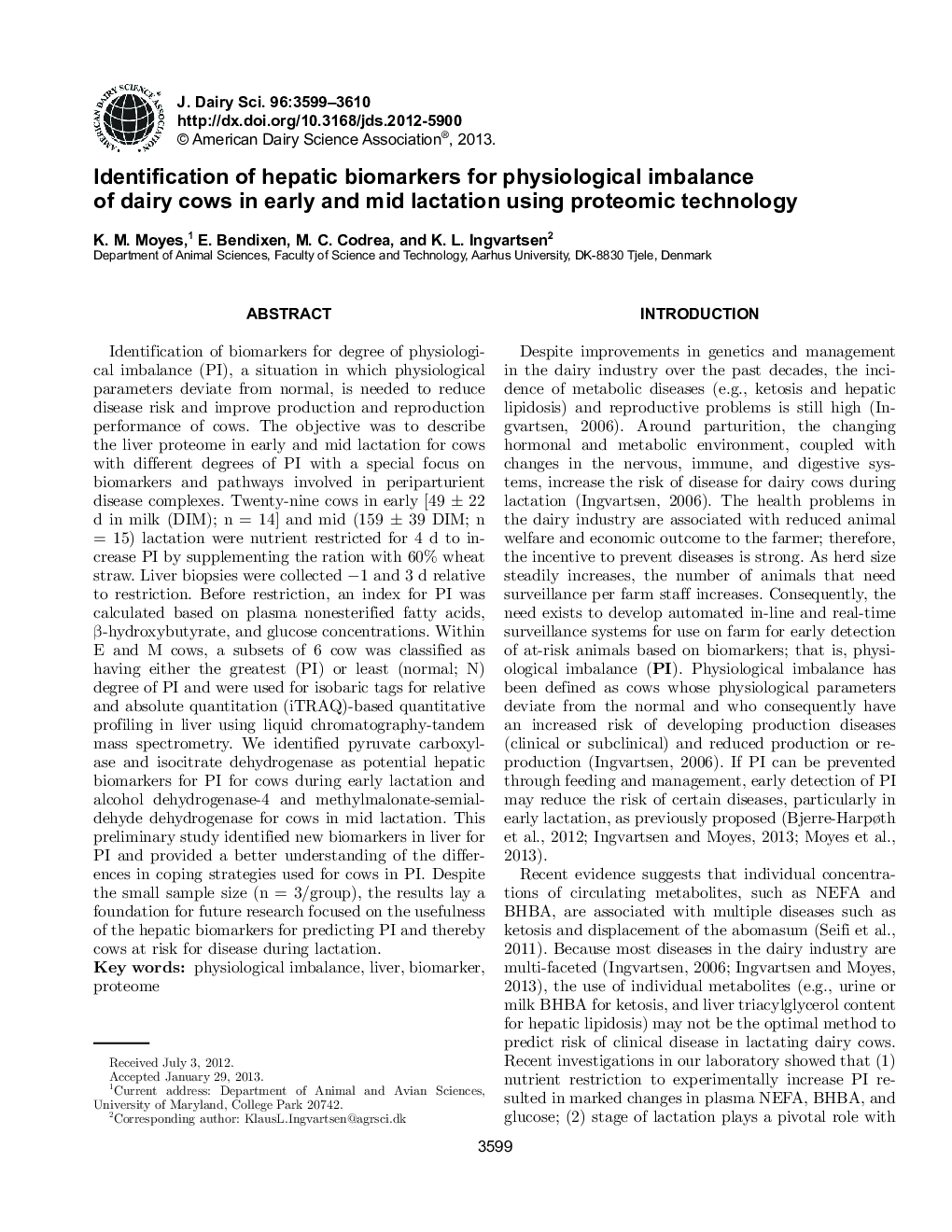| Article ID | Journal | Published Year | Pages | File Type |
|---|---|---|---|---|
| 10978123 | Journal of Dairy Science | 2013 | 12 Pages |
Abstract
Identification of biomarkers for degree of physiological imbalance (PI), a situation in which physiological parameters deviate from normal, is needed to reduce disease risk and improve production and reproduction performance of cows. The objective was to describe the liver proteome in early and mid lactation for cows with different degrees of PI with a special focus on biomarkers and pathways involved in periparturient disease complexes. Twenty-nine cows in early [49 ± 22 d in milk (DIM); n = 14] and mid (159 ± 39 DIM; n = 15) lactation were nutrient restricted for 4 d to increase PI by supplementing the ration with 60% wheat straw. Liver biopsies were collected â1 and 3 d relative to restriction. Before restriction, an index for PI was calculated based on plasma nonesterified fatty acids, β-hydroxybutyrate, and glucose concentrations. Within E and M cows, a subsets of 6 cow was classified as having either the greatest (PI) or least (normal; N) degree of PI and were used for isobaric tags for relative and absolute quantitation (iTRAQ)-based quantitative profiling in liver using liquid chromatography-tandem mass spectrometry. We identified pyruvate carboxylase and isocitrate dehydrogenase as potential hepatic biomarkers for PI for cows during early lactation and alcohol dehydrogenase-4 and methylmalonate-semialdehyde dehydrogenase for cows in mid lactation. This preliminary study identified new biomarkers in liver for PI and provided a better understanding of the differences in coping strategies used for cows in PI. Despite the small sample size (n = 3/group), the results lay a foundation for future research focused on the usefulness of the hepatic biomarkers for predicting PI and thereby cows at risk for disease during lactation.
Related Topics
Life Sciences
Agricultural and Biological Sciences
Animal Science and Zoology
Authors
K.M. Moyes, E. Bendixen, M.C. Codrea, K.L. Ingvartsen,
